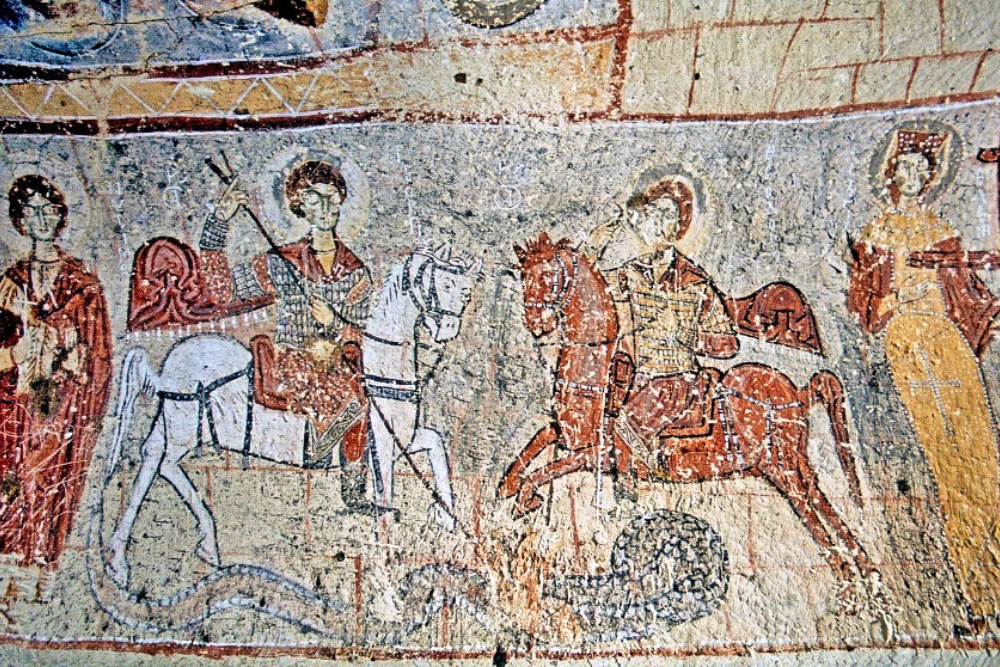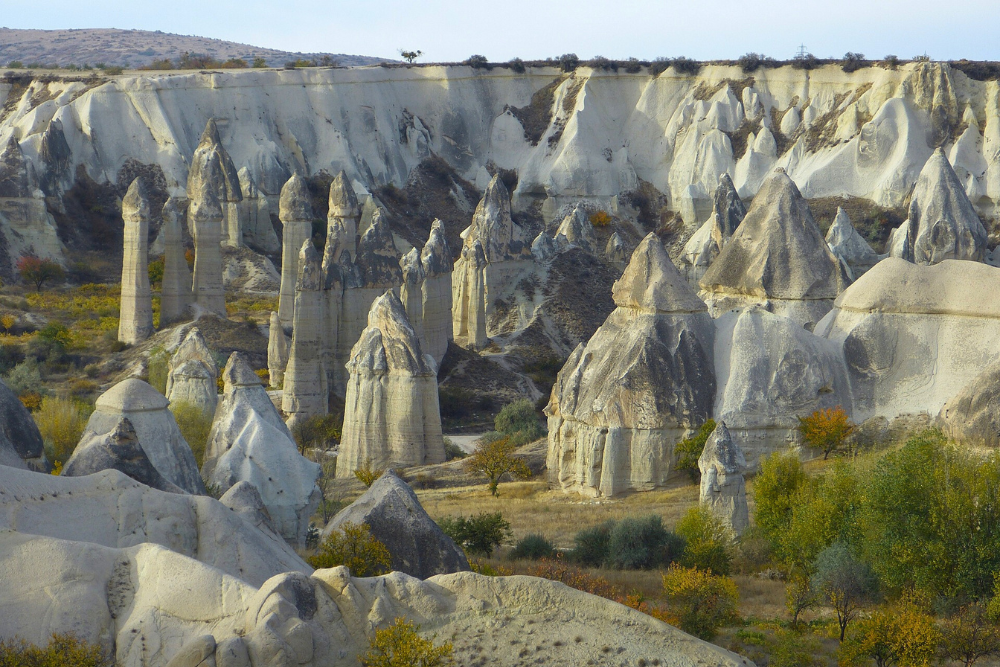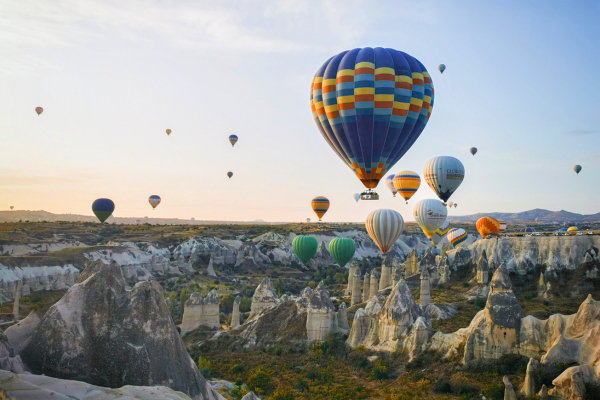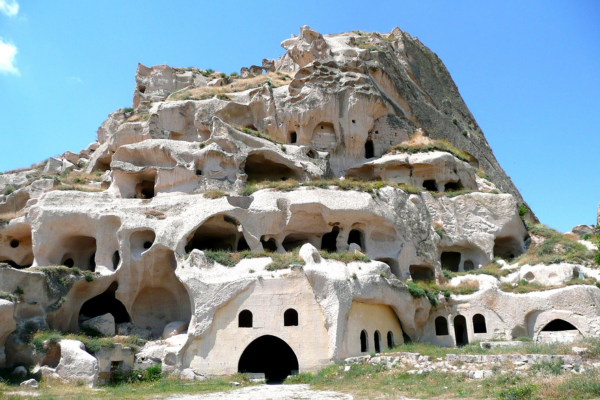TURKEY
A Visual Feast
By Furkan Kara
Isparta, Turkey
Can natural beauty alone attract and inspire film directors to make their movies in a particular place? Cappadocia, a region in Turkey that has been a hub of culture, economy, and life since the sixth century BC, seems to do just that.
Cappadocia, an ancient Persian word that means “the land of beautiful horses,” continues to attract historians, adventurers, and countless tourists today. This phenomenon leads to another question: how can so many incredible features and wonders exist in just one place?
Pottery
If you’re interested in making pottery as a hobby in Turkey, you can’t use any random soil. Cappadocia’s clay contains silicium, also known as silicon. This element helps create a more durable material for ceramics. Pottery-making studios are open year-round for tourists.
Marble Quarries
The minerals in Cappadocia are not limited to silicon. It is also possible to find marble and other stones that are red and brown. These components may be used in the construction of houses.
Engineering
In order not to disrupt the area’s harmonious appearance, engineers must follow construction guidelines. Some designs that would clash with the traditional look of Cappadocia might be banned. For example, rules restrict the height of houses to one or two stories. Shop signs are a gold color to maintain a cohesive look.
Visiting Churches
Interestingly, Cappadocia is home to two churches, located within 80 kilometers of each other, that share the name “Snake Church.” The first is situated in the Göreme Open Air Museum and is one of the most renowned in the area. Paintings of significant figures from early Christianity adorn its walls, including a depiction of St. George and St. Theodore battling a long, snake-like dragon—giving the church its name.
The second Snake Church is located about an hour’s drive away in the Ihlara Valley. Inside, one of the walls features a painting of St. Michael weighing a soul with scales, surrounded by images of sinful people tormented by snakes. The west part of this cave contains a burial chamber.

Snake Church in Göreme. Photo credit: unknown author via Wikimedia Commons
Underground Cities
Carved into the soft volcanic rock of the Cappadocia region centuries ago, the eight-story Derinkuyu Underground City could meet all the essential needs of 20,000 people. Unlike Kaymakli Underground City, another example in the region, Derinkuyu includes unique features like a missionary school, a confessional, and a baptismal pool. It even contained a well that could be sealed off for protection.
Fairy Chimneys
Fairy chimneys are famous symbols of Cappadocia and make the area feel mystical because of their unusual shapes. These tall, thin rock formations were created by the erosion of volcanic rock over thousands of years. Even though we know they were formed by natural events, people who visit still sense something magical about them. There are many stories and legends about the fairy chimneys. But in the end, science explains the real reason they exist.

Balloons and Camels
One of the best ways to explore Cappadocia’s extraordinary landscape is by taking a hot air balloon ride. The balloons let you float up and down over valleys, fairy chimneys, gardens, and rock houses, especially during sunrise when the view is most spectacular. The mix of colorful valleys and balloons in the sky is perfect for taking photos and creating lasting memories. Flying in a balloon is a must-do when you visit Cappadocia. You can also join an exciting camel safari tour, where you’ll get a unique view of the hot air balloons and the Red and Güllüdere Valleys. It’s a great opportunity to take lots of photos!
Have a suggestion for this story? We’d love for you to submit it!


Blank
Blank
Math Resources
- You have a collection of balloons. Twenty of them are yellow, 150 are green, 45 are blue, 40 are orange, and 45 are red.
- If you pick a balloon at random, what is the probability of picking a yellow one?
- What is the probability of randomly picking a red balloon?
- What is the ratio of yellow balloons to blue balloons?
- What is the ratio of red balloons to orange balloons?
- As your hot air balloon takes off, the air temperature decreases by approximately 6.5°C for every 1,000 meters you ascend. What is that change in Fahrenheit? If the temperature on the ground is 20°C, what would the temperature in Celsius be at an altitude of 1,500 meters? Convert your answer to both Fahrenheit and Kelvin.
- If four million tourists visited Cappadocia last year, and the number of tourists increases by five percent each year, how many tourists would you predict will visit in five years? Do you think Cappadocia has a maximum number of tourists it can receive? With five percent yearly growth, in how many years will it reach that limit?
Social Justice Question
Camels are used to attract tourists in the region. Why is it important to make sure these animals are treated well? How can we protect the rights of camels and other animals used for tourism? What are some ways to prevent animal abuse in general?
Explore Further
- Photo gallery of the area
- UNESCO World Heritage Site page for Cappadocia
- Information about Cappadocia’s history
- How the underground city of Derinkuyu was formed
- Drone views of the fairy chimneys and rock houses
Share Your Story
Write your own Global Math Story and send it to us!
Sorry, the comment form is closed at this time.